Salento is located in the middle of the coffee region of Colombia. But it’s not the coffee plantations that make most visitors come to Salento. In the region, the tallest wax palm trees in the world can be found in the Cocora Valley and Samaria Valley. The fine center of Salento with many restaurants, bars and cafes is a great base for all activities that can be done from Salento. What is there to do in Salento and how do you get there and back?
The centre
Salento is built in the hills and you notice that in the center. All the streets go up and down and with that you often have many perspectives on the town. The colored window and door frames make it a cheerful whole. The main square, Plaza de Bolívar, is surrounded by restaurants, shops, bars and cafes and is also a meeting point for local residents. Calle Real (Carrera 6), is the main street of the town where you will find the most souvenir shops and the houses are also the most colored and decorated.
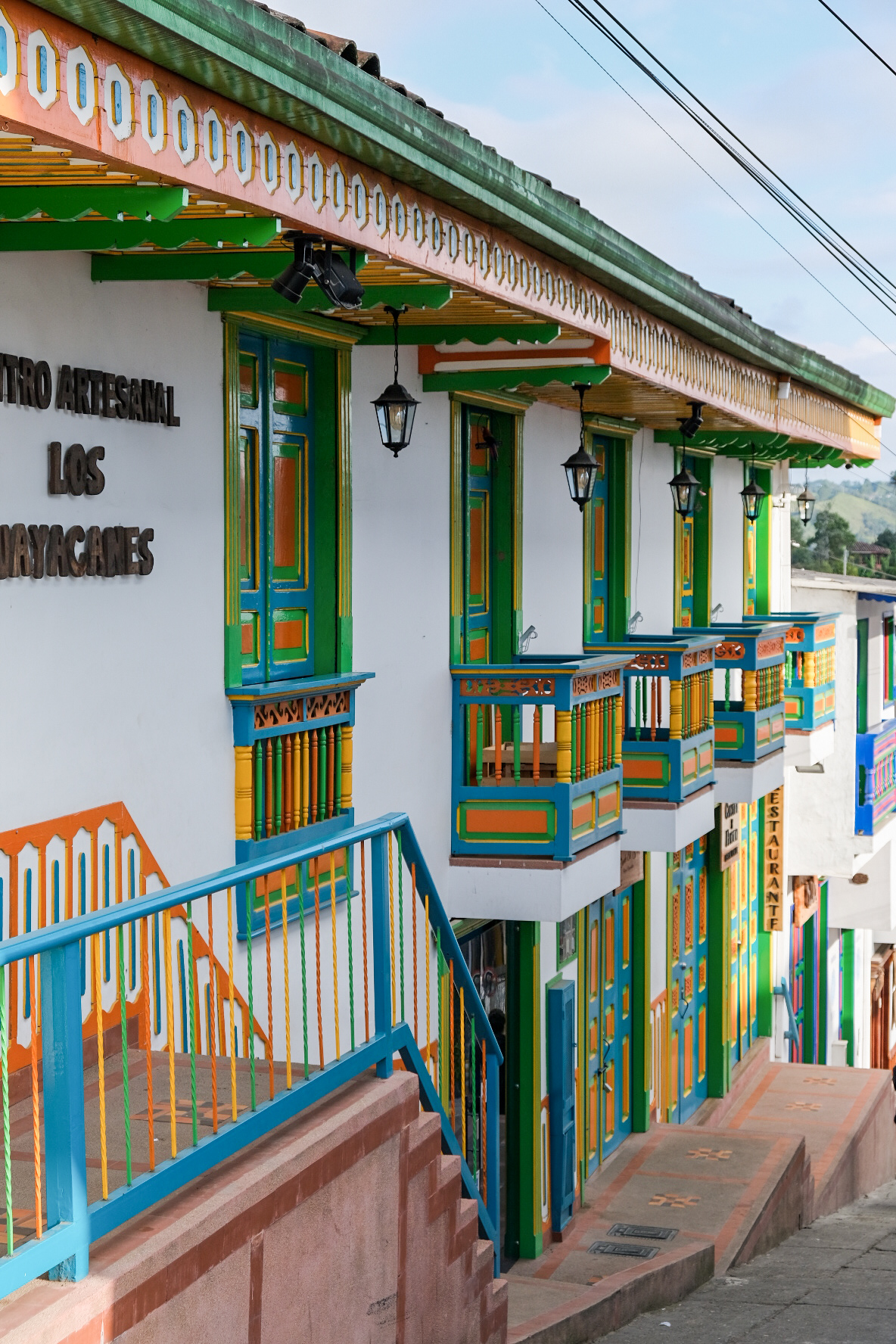
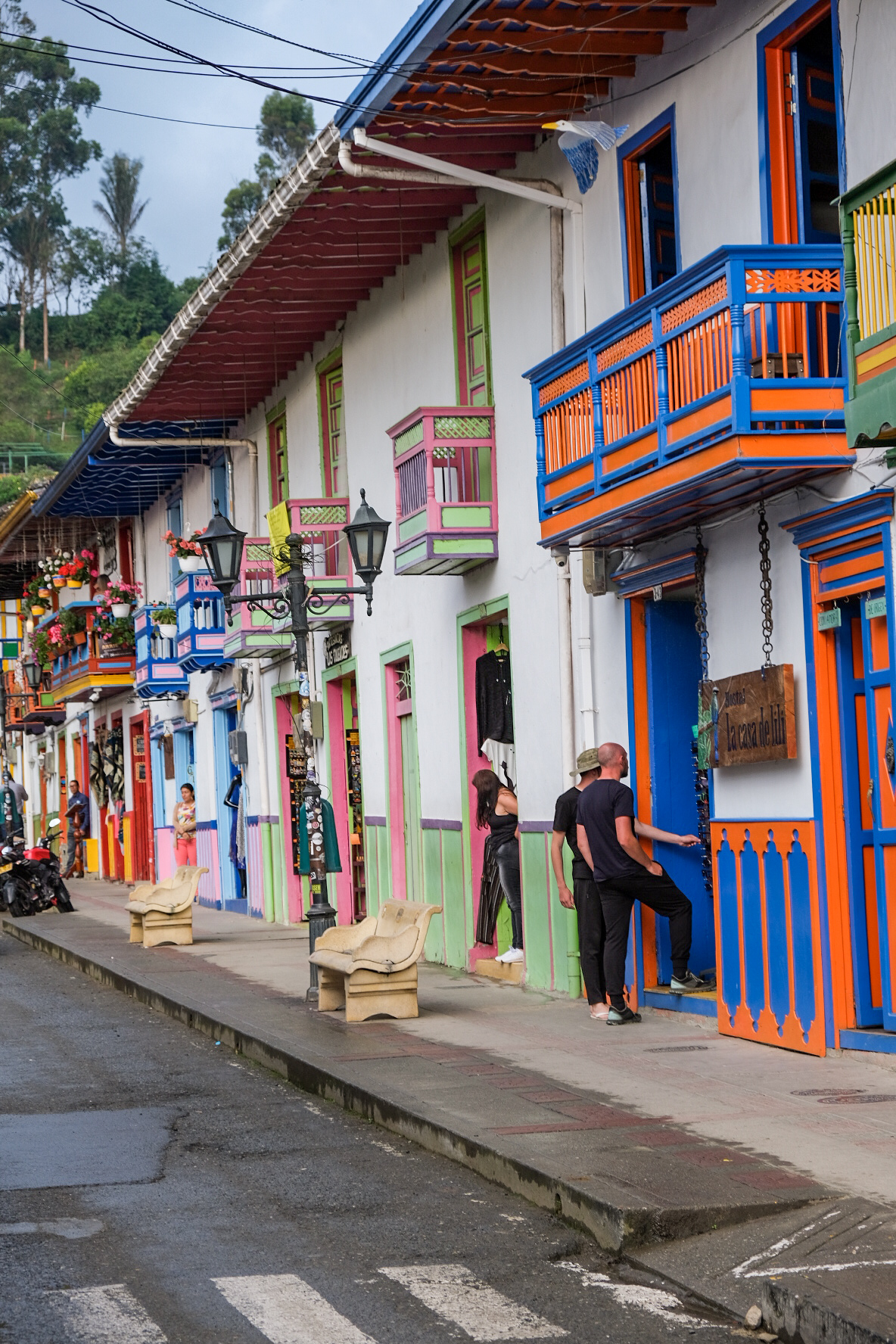
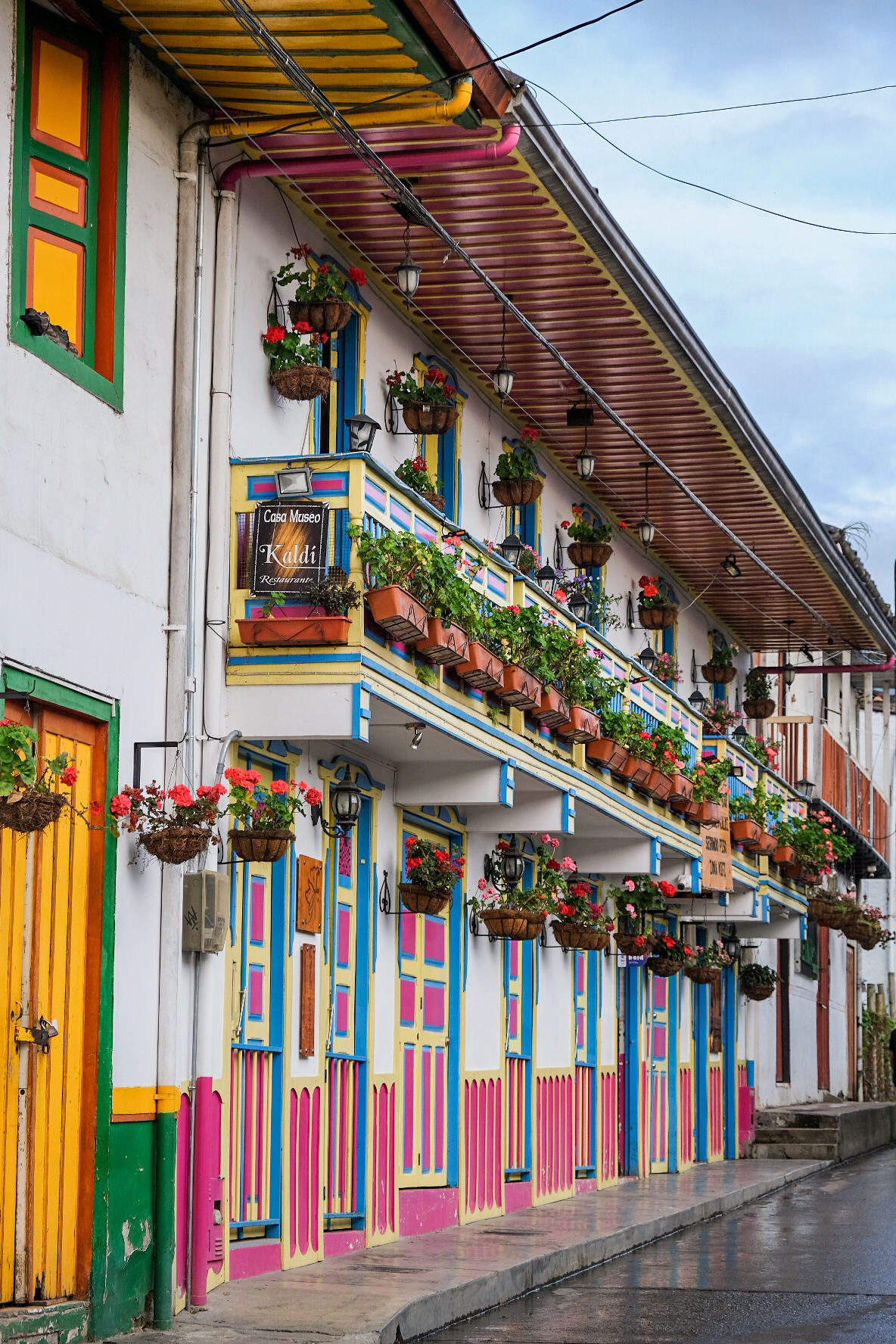
Viewpoints
If you walk up to the stairs from Calle Real, and walk up from there, you will arrive at the Mirador Alto de la Cruz viewpoint. From here you have a view over Salento and the mountains beyond. If you continue on the left, after a few minutes you will arrive at Mirador de Salento, followed by Ecoparque Mirador Salento. From here you have a view over the beginning of the Cocora valley, but you can’t see the palm trees from there. If you walk down from the Ecoparque Mirador Salento to the right, you will come to a more wooded area. Especially here you have a good chance of spotting the MotMot bird. You can regularly see him everywhere in Salento, but between the trees you have the best chance.


Cocora Valley
The Cocora Valley is the main attraction of Salento. The valley is located about 10 km east of Salento. Known for the longest wax palm trees in the world. The trees can grow up to 60 meters in length. Unfortunately, due to poor conditions, among other things, the number of trees has been greatly reduced. Yet the trees and the surroundings remain a beautiful place to visit.
The Cocora valley is divided into a few hiking areas (see map). The hiking trail of the long route (12 km) starts at the place where you arrive with the Willy. This long route can take you in 2 directions. From the point where you arrive to the viewing points at the high wax palm trees. This is the toughest variant, because you walk a longer distance uphill. Visa vice versa is also possible. Then you choose to first go to the lookout points and then walk down through the woods and over the river into the valley. For the longer route you pay 5,000 pesos/€1.25 per person more and you pay in the valley (and not at the checkpoint at the top of the mountains after the lookouts). During the walk you can also take a trip to a Hummingbird Reserve where hummingbirds fly and there is a place to take a break. You walk an extra piece for this and you pay 15,000 pesos/€3.75 extra.
Good to know for the extra route is that it is a clear path, but it is good to take into account mud if it has been raining. You also cross a stream a few times and you have to cross the river a few times. Suspension bridges have been built for this. A pair of sturdy and closed shoes are recommended. And bring a raincoat just in case.
The short route is the route that only goes to the viewpoints over the palm trees and the valley. If you choose to go (first) to the viewpoints, you will first walk from the Willy to the entrance in about 20 minutes. You pass several stalls and restaurants and can already see some wax palm trees. The entrance fee is 10,000 pesos/€2.50 per person. From the counter you can go in two directions, the red route and the blue route. The red route is recommended, because the blue route goes up steeply and you miss a part of the valley. You can walk up the red route and back via the blue route, via the lookout points.
You enter the Cocora valley by taking a Willy from the center. A Willy is a jeep taxi (you can find more in the coffee region of Colombia), which can take up to 15 people in total. The Willy’s leave from the main square of Salento and cost 4,000 pesos/€1 per person per ride. You pay for your tickets at a small counter that is also on the square and you also pay for your return journey. You will receive a ticket for this, keep it well. The drive from Salento to the Cocora Valley takes about 30 minutes. A Willy leaves with enough people. You may have to wait for a Willy to leave, or until a Willy is available (when busy).
Good to know that the weather in the Cocora Valley is often the best, especially in the morning. During the day the weather changes and you notice that it is cloudier in the afternoon. It is recommended to leave as early as possible in the morning. The Cocora Valley is open from 8:00 AM to 6:00 PM and the first Willy’s leave from 7:00 AM.

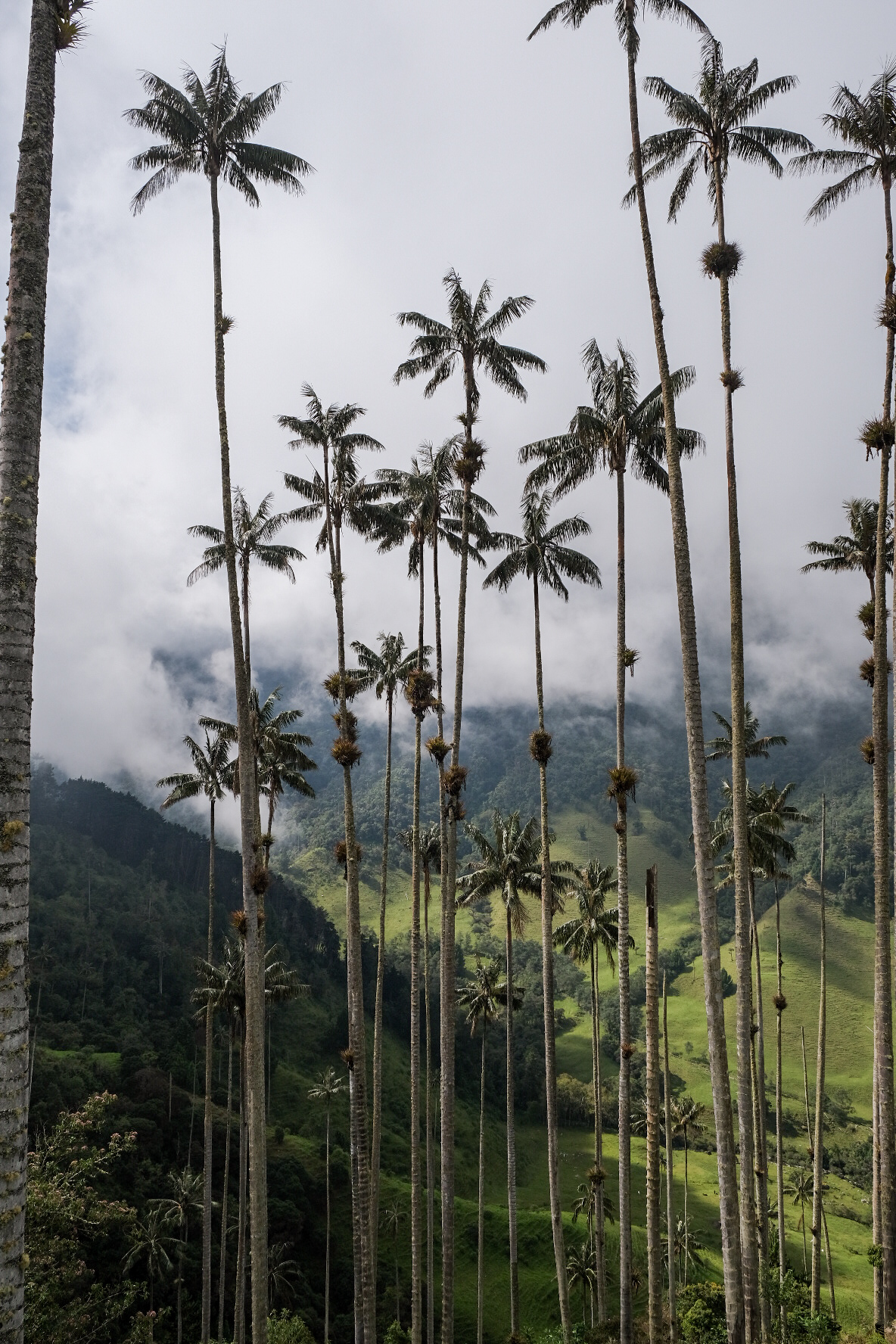
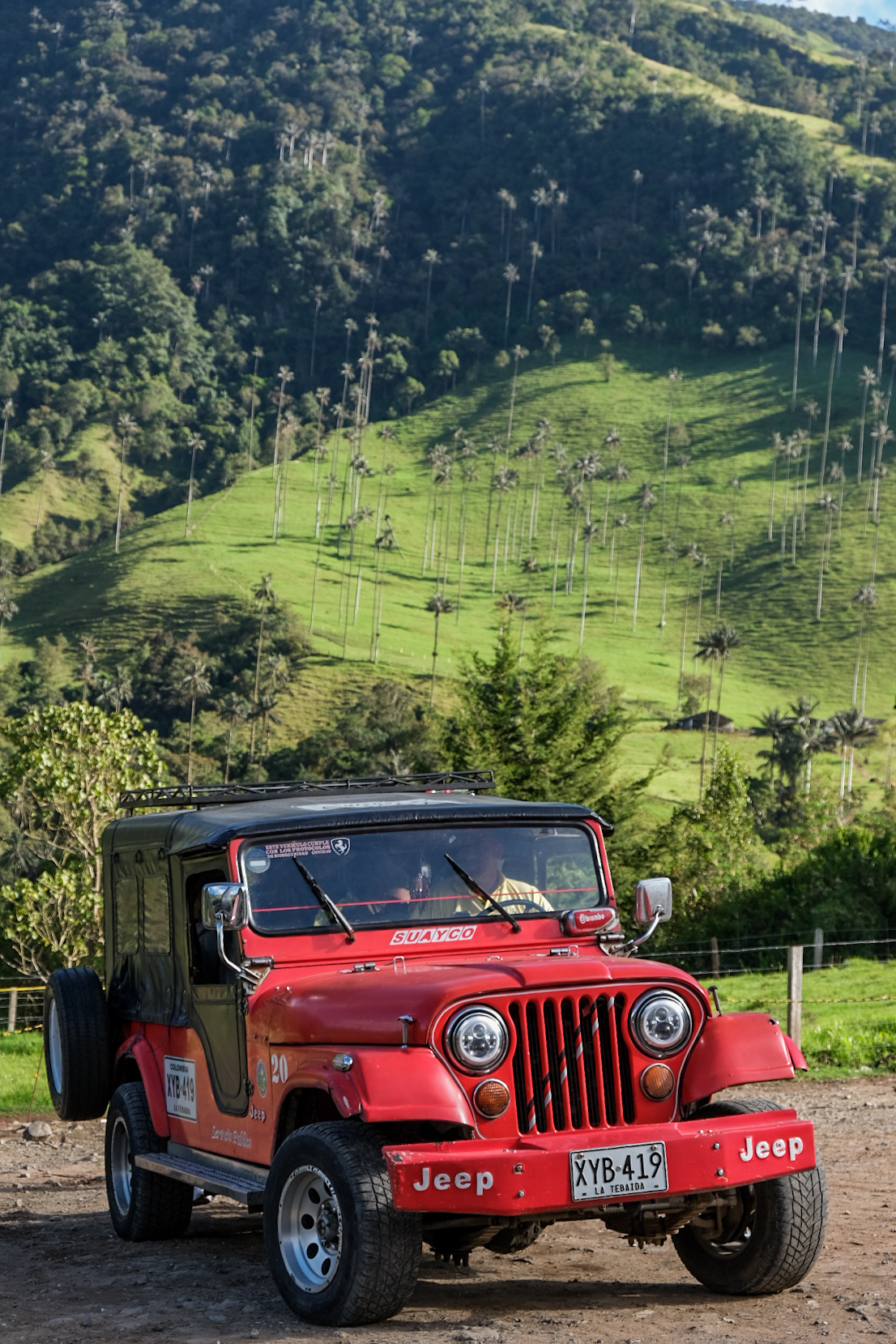
Samaria Valley
The Samaria valley is a lesser known wax palm tree valley, but here you will find many more wax palm trees. The beauty of this valley is that the area is on private land, which means that the environment is better protected and preserved. You also only come here with a mountain bike tour from Salento Cicling. This is a tour you can do. You leave in the morning with a jeep and mountain bikes from Salento and drive to the Samaria valley. You start at altitude and after a short test ride you really only drive down to Salento. A guide, mountain bikes and lunch are included. You pay 210,000 pesos/€52.50, the tour lasts 5 hours and you can book at the office of Salento Cycling or online.
Other activities
Beyond the wax palm valleys, there are many other activities on offer in Salento. Think of horse riding (make sure that the horses look well cared for), doing a coffee tour at one of the fincas (coffee farms) and visiting several waterfalls in the area. Salento is also known for its ‘trout’. This is trout fish and this fish dish is a specialty of the town. It is therefore often and widely offered.
How do you get there and back?
You arrive in Salento by bus. The largest nearest cities are Pereira and Armenia. If you come from the south, for example from Cali, you will first travel to Armenia and then transfer to a bus to Salento. The buses run quite regularly, about every half hour. From Armenia to Salento takes about 1 hour and costs 5,500 pesos/€1.40. If you come from Medellin, you first travel to Pereira and there you change to the bus to Salento. If you first travel to Riocucio (for example from Jardín), you can take the direct bus from Riosucio to Salento. This bus goes once a day, at 12.30 pm and you can buy your ticket at the bus station of Riosucio. The bus company is called Flota Occidental. The drive from Riosucio to Salento takes about 4 hours and costs 36,000 pesos/€9. The bus goes via Pereira, but you can stay seated. If you do not take the direct bus to Salento, you will first travel to Pereira and then to Salento. There are buses for this approximately every half hour. You arrive in Salento at the Terminal de buses de Salento. This terminal is located less than a kilometer from the main square of Salento.
From Salento to Medellin there is a direct bus 4x a day for 70,000 pesos/€17.50 and departs at 8.00/09.30/14.00/20.30. Please note that between Riosucio and Medellin (at the time of writing) road works are due to previous landslides, and the journey may take longer. The direct bus to Riocucio from Salento to change for the bus to Jardín departs daily at 9.40 am.
If you want to go to the area around Salento by bus, you can go to Filandia (via Armenia and costs 11,000 pesos/€2.75 one way), Armenia (5,500 pesos/€1.40), Boquia (1,500 pesos/€0.30 ) or Posada Alemana (via Armenia, 8,700 pesos/€2.15). These minibuses leave fairly regularly from the Terminal de buses de Salento bus station.

